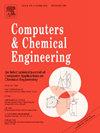改造普通波特兰水泥生产,减少温室气体排放
IF 3.9
2区 工程技术
Q2 COMPUTER SCIENCE, INTERDISCIPLINARY APPLICATIONS
引用次数: 0
摘要
水泥生产是一个能源密集型过程,也是一个主要的温室气体(GHG)排放源。碳捕集、利用和封存(CCUS)技术和化石燃料替代作为水泥行业的碳减排措施进行了研究。然而,它们改造普通硅酸盐水泥(OPC)生产的最佳组合尚未得到评估。我们制定并优化了上部结构,通过优化CCUS技术和燃料转换来改造OPC生产。我们的分析表明,新兴的帕累托最优设计在很大程度上取决于当地条件,特别是生物质和碳储存的可用性、电价和使用电力组合的排放系数。从经济上讲,在德国,以目前的成本,碳捕集与封存(CCS)比碳捕集与利用(CCU)更具成本效益。只有当可再生电力能够以非常低的成本获得时,CCU才成为一个有吸引力的选择。本文章由计算机程序翻译,如有差异,请以英文原文为准。
Retrofitting Ordinary Portland cement production for reduced greenhouse gas emissions
Cement production is an energy-intensive process and a major greenhouse gas (GHG) emitter. Carbon capture, utilization and storage (CCUS) technologies and fossil fuel substitution have been studied as carbon mitigation measures in the cement industry. However, their optimal combination for retrofitting the production of Ordinary Portland cement (OPC) has yet to be assessed. We formulate and optimize a superstructure to retrofit the OPC production by optimally combining CCUS technologies and fuel switching. Our analysis shows that the emerging Pareto-optimal designs heavily depend on the local conditions, notably the availability of biomass and carbon storage, electricity prices, and emission factor of the used electricity mix. Economically, carbon capture and storage (CCS) is more cost-effective than carbon capture and utilization (CCU) via power-to-methane at current costs in Germany. Only if renewable electricity can be accessed at very low cost, CCU becomes an attractive option.
求助全文
通过发布文献求助,成功后即可免费获取论文全文。
去求助
来源期刊

Computers & Chemical Engineering
工程技术-工程:化工
CiteScore
8.70
自引率
14.00%
发文量
374
审稿时长
70 days
期刊介绍:
Computers & Chemical Engineering is primarily a journal of record for new developments in the application of computing and systems technology to chemical engineering problems.
 求助内容:
求助内容: 应助结果提醒方式:
应助结果提醒方式:


